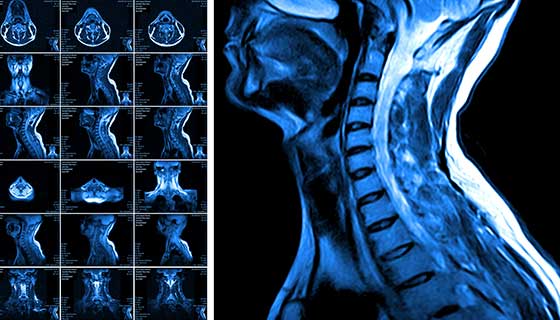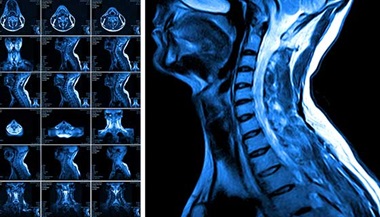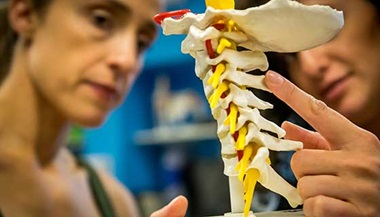Head Injury in Children
What is a head injury in children?
A head injury is any kind of damage to the scalp, skull, brain, or other tissue and blood vessels in the head. A head injury is also often called a brain injury or traumatic brain injury (TBI), depending on the extent of the injury.
A head injury can be as mild as a bump, bruise (contusion), or cut on the head. Or it can be a concussion, a deep cut or open wound, broken skull bones, internal bleeding, or damage to the brain. Head injuries are one of the most common causes of disability and death in children.
Types of head injuries include:
Concussion
This is an injury to the head that may cause the brain to not work normally for a short time. Sometimes, this can result in a loss of awareness or alertness for a few minutes up to a few hours. Some concussions are mild and brief, and you may not know right away that a concussion has occurred.
Contusion
This is a bruise on the brain. A contusion causes bleeding and swelling inside of the brain around the area where the head was struck. In some cases, a contusion may occur on the opposite side of the head because of the brain hitting the skull. This injury can happen from a direct blow to the head, violent shaking of a child, or a whiplash-type injury from a motor vehicle accident. The jarring of the brain against the sides of the skull can cause tearing of the internal lining, tissues, and blood vessels.
Skull fracture
A skull fracture is a break in the skull bone. There are 4 major types of skull fractures:
-
Linear skull fracture. This is a break in the bone that does not move the bone. Your child may be watched closely in the hospital for a brief time. They can usually go back to normal activities in a few days. No treatment is usually needed.
-
Depressed skull fracture. With this fracture, part of the skull is sunken in where the bone is broken. This may happen with or without a cut in the scalp. If the inner part of the skull is pressed against the brain, this type of skull fracture needs surgery to help correct it.
-
Diastatic skull fracture. This is a fracture that occurs along the suture lines in the skull. These are the jagged lines between the skull bones that grow together (fuse) as a child grows. With this type of fracture, the normal suture lines are widened. These fractures are more often seen in newborns and infants.
-
Basilar skull fracture. This is a break in the bone at the base of the skull. It can be a serious type of skull fracture. Children with this type of fracture often have bruises around their eyes and a bruise behind their ear. They may also have clear fluid draining from their nose or ears. This is because of a tear in part of the covering of the brain. A child with this fracture may need to be watched closely in the hospital.
What causes a head injury in a child?
There are many causes of head injury in children. Common causes are:
-
Sports injury
-
Falling
-
A motor vehicle accident, or being struck by a vehicle while walking
-
Child abuse
-
Abusive head trauma
Which children are at risk for a head injury?
The risk of head injury is high in teens. Head injuries happen twice as often in boys than in girls. Head injuries are more common in the spring and summer months when children are very active in outdoor activities, such as riding bikes, roller skating, or skateboarding. Children who play sports, such as football, soccer, hockey, and basketball, are also at higher risk of concussion.
What are the symptoms of a head injury in a child?
Symptoms can occur a bit differently in each child and vary depending on how severe the injury is.
Symptoms of mild head injury may include:
-
Raised, swollen area from a bump or a bruise
-
Small, shallow cut in the scalp
-
Headache
-
Sensitivity to noise and light
-
Irritability or abnormal behavior
-
Confusion
-
Lightheadedness or dizziness
-
Problems with balance
-
Nausea
-
Problems with memory or concentration
-
Change in sleep patterns
-
Blurred or double vision
-
Eyes that look tired
-
Ringing in the ears (tinnitus)
-
Changes in taste
Symptoms of moderate to severe head injury may include any of the above plus:
-
Tiredness or trouble staying awake
-
Loss of consciousness
-
Severe headache that does not go away
-
Repeated nausea and vomiting
-
Loss of short-term memory
-
Slurred speech
-
Trouble walking
-
Weakness in one side or area of the body
-
Sweating
-
Pale color of skin
-
Seizures or convulsions
-
Blood or clear fluid draining from ears or nose
-
Pupil looks larger in one eye
-
Deep cut in the scalp
-
Loss of consciousness and can’t be awakened (coma)
-
Loss of thinking and awareness of surroundings (vegetative state)
-
Locked-in syndrome, a condition where a person is conscious and can think but can’t speak or move
The symptoms of head injury can be like other health conditions. Make sure your child sees their healthcare provider for a diagnosis.
How is a head injury diagnosed in a child?
The healthcare provider will ask about your child’s symptoms, health history, and recent injuries. They will give your child a physical exam. Your child may also have tests, such as:
-
Blood tests. Samples of your child’s blood may be taken to check for problems.
-
X-ray. This test uses electromagnetic energy beams to make images of internal tissues, bones, and organs onto film.
-
MRI. This imaging test uses large magnets and a computer to make detailed images of organs and tissues in the body.
-
CT scan. This test uses X-rays and a computer to make detailed images of the body. A CT scan shows detailed images of any part of the body, including the bones, muscles, fat, and organs. CT scans are more detailed than standard X-rays.
-
Neuropsychological testing. This is to find out if there is a problem with brain function after a head injury.
Children playing organized sports will usually have an "ImPACT" test. This measures a child's brain processing. Children will usually have this test at the beginning of the sports season and then again should they have any head injury.
Head injury can cause nervous system problems and may need further medical follow-up.
How is a head injury treated in a child?
Treatment will depend on your child’s symptoms, age, and general health. It will also depend on how severe the condition is.
A child who has a concussion should not play sports or do other activities until a healthcare provider determines that it's safe to do so. Ask your child's healthcare provider for this information in writing and give a copy to your child's coach. In an age-appropriate manner, explain to your child why this limit on sports and activities is important. A child who gets a second concussion before symptoms of the first concussion have gone away can end up with a more severe brain injury. Athletes with concussion are gradually and slowly allowed to do more exercise.
Treatment may include:
-
Rest
-
Ice on the area
-
Antibiotic ointment and a bandage
-
Stitches in the scalp to close a wound
-
Being watched for a period of time for problems
In some cases, a child may need to stay in the hospital. They may be watched more closely for problems. A child may also need:
-
Medicine to cause them to relax or sleep (sedation)
-
Help with breathing from a breathing machine (mechanical ventilator or respirator)
-
Diagnostic tests
-
Surgery
-
Referral to a traumatic brain injury specialist
A child may also need to be kept track of for increased pressure inside the skull. This is called intracranial pressure (ICP) monitoring. A head injury may cause the brain to swell. There is only a small amount of room for the brain to swell inside the skull. This causes pressure inside the skull to increase and can lead to brain damage.
ICP can be measured in 2 ways:
-
Place a small hollow tube (catheter) into the fluid-filled space in the brain (ventricle).
-
Place a small hollow device (bolt) through the skull into the space just between the skull and the brain.
In both cases, the ICP device is inserted by the healthcare provider either in the intensive care unit (ICU) or in the operating room. The ICP device is then attached to a monitor that gives a constant reading of the pressure inside the skull. If the pressure goes up, it can be treated right away. While the ICP device is in place, your child will be given medicine to stay comfortable. When the swelling has gone down and there is little chance of more swelling, the ICP device will be removed.
Talk with your child’s healthcare providers about the risks, benefits, and possible side effects of all treatments.
What are possible complications of a head injury in a child?
Children who suffer a severe brain injury may lose some function in muscle, speech, vision, hearing, or taste. This depends on the area where the brain is damaged. Long- or short-term changes in personality or behavior may also occur. These children need lifelong medical and rehabilitative treatment. This may include physical, occupational, or speech therapy.
How well a child recovers from a head injury depends on the type of injury and other health problems that may be present. It is important to focus on maximizing your child's abilities at home, school, and in the community. You can encourage your child to strengthen their self-esteem and have independence.
If the child has a long recovery or possible long-term (permanent) disabilities, community resources and legal protections may be helpful. The Americans with Disabilities Act gives children with disabilities special help in the public school system. Check with your school's principal for information.
How can I help prevent a head injury in my child?
Head injury can be prevented in ways, such as:
-
Work to make sure that safe playing environments are available for children.
-
Create a safe sports culture. Make sure that coaches teach and enforce correct sporting methods, such as no head hitting in football. They should also know first aid and have a concussion action plan in place.
-
Check that children wear a seat belt when riding in any vehicle. For younger children, have them ride in the correct car seat or booster seat for their age and weight.
-
Make sure children always wear the correct helmet while playing sports, riding bikes, roller skating, skateboarding, or skiing.
When should I call my child’s healthcare provider?
Call the healthcare provider if your child has:
-
Symptoms that don’t get better, or get worse
-
New symptoms
Key points about head injury in children
-
A head injury is any kind of damage to the scalp, skull, brain, or other tissue and blood vessels in the head. A head injury that affects the brain is often called a brain injury or traumatic brain injury (TBI).
-
The risk of a head injury is high in teens. Head injuries are more common in the spring and summer months when children are very active in outdoor activities, such as riding bikes, roller skating, or skateboarding. Children who play sports, such as football, soccer, hockey, and basketball, are also at higher risk of concussion.
-
Symptoms of a head injury may include swelling, headache, sensitivity to noise and light, confusion, or nausea and vomiting.
-
Treatment may include rest, ice, and stitches. In some cases, a child may need to stay in the hospital. They may be watched more closely for problems.
-
A child may also need to be watched closely for increased pressure inside the skull (intracranial pressure).
-
Children who suffer a severe brain injury may lose some function in muscle, speech, vision, hearing, or taste. They may need lifelong medical and rehab treatment.
Next steps
Tips to help you get the most from a visit to your child’s healthcare provider:
-
Know the reason for the visit and what you want to happen.
-
Before your visit, write down questions you want answered.
-
At the visit, write down the name of a new diagnosis and any new medicines, treatments, or tests. Also write down any new instructions your provider gives you for your child.
-
Know why a new medicine or treatment is prescribed and how it will help your child. Also know what the side effects are.
-
Ask if your child’s condition can be treated in other ways.
-
Know why a test or procedure is recommended and what the results could mean.
-
Know what to expect if your child does not take the medicine or have the test or procedure.
-
If your child has a follow-up appointment, write down the date, time, and purpose for that visit.
-
Know how you can contact your child’s healthcare provider after office hours. This is important if your child becomes ill and you have questions or need advice.
Regenerating Neurons | Science: Out of the Box
For a long time, scientists thought that brain and spinal cord cells, once damaged, could not be fixed. But that may not be true. Watch neuroscientist David Linden explain how some nerve cells can repair themselves.
#TomorrowsDiscoveries: How Stem Cells May Treat Brain Injuries - Dr. Hongjun Song
Our brains produce over 1,000 new nerve cells every day. Dr. Hongjun Song develops new technologies to study stem cells in humans and animals, in hopes of one day harnessing our own regeneration potential to improve learning and memory and to help treat brain injuries and disorders, such as epilepsy and depression.








